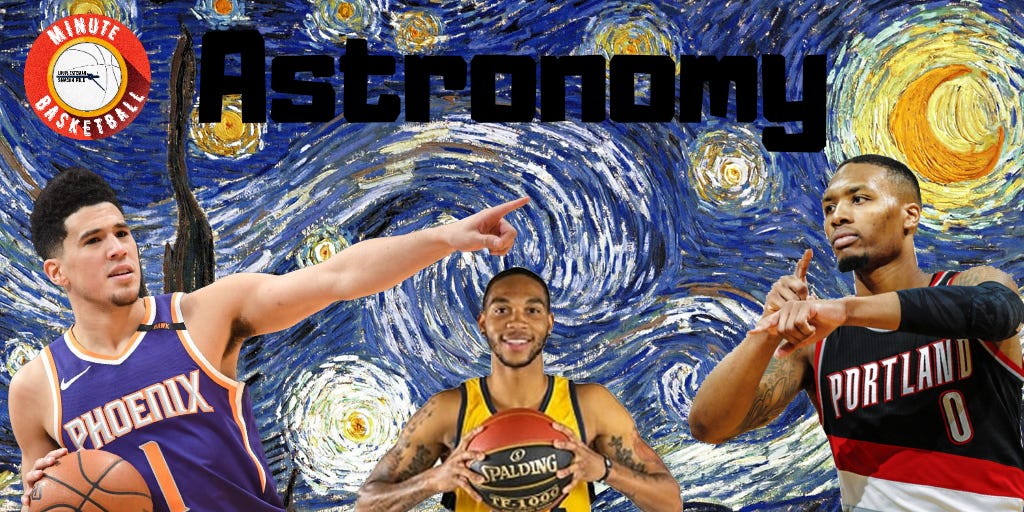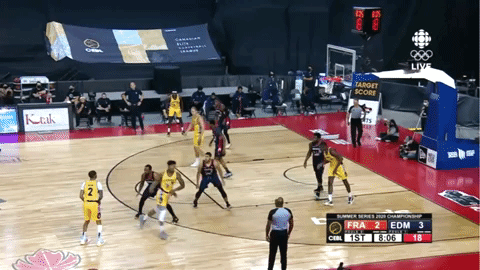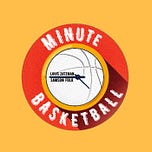
Physics is incomprehensible in big spaces. Nothing, really, makes sense when you zoom out far enough. But that’s especially true in outer space. There are forces like gravity that push and pull with more horsepower than there are horses on Earth. There are all sorts of bizarre objects: asteroids, and comets, which are really just icy asteroids, but so cold that you’d freeze just to touch one, if you didn’t burn up from the force of impact. There is space weather, like solar flares, which are so hot that you’d melt just to see one in yawning raw space.
Those things don’t make sense on Earth. If we’re lucky, we live in cozy houses and apartments where temperature fluctuates by a matter of degrees; the space for change is ten degrees rather than ten million. Anything outside of 65-75 Fahrenheit, and, hey, it’s mildly uncomfortable. We so associate astronomy with unthinkable numbers that the word ‘astronomical’ doesn’t even mean ‘having to do with outer space,’ or anything to do with astronomy at all. It just means big.
But sometimes the grand physics of outer space and the mundane forces that govern our tiny habitable sphere of rock collide. Take the Chicxulub crater, for example, which was created when an asteroid several kilometres wide smashed into Earth hard enough to kill 75 percent of life on the planet. That happened, by the way, 66 million years ago. Like I said, the numbers involved don’t seem like they could apply to us.
There are other times when astronomical forces do impact us mortals, and the results can be gory. Or, at least, it can seem that way. This week we’re talking astronomy on the hardwood. We have the Suns, the Moon, and the Star.
Looking back - Zatzman

Suns
As in, the Phoenix Suns. See the connection! I’d bring astronomy into basketball eventually. Gotta trust.
The Phoenix Suns are also 7-0 in the bubble. And those seven haven’t been cheap wins, either. No, The Suns have been a proper juggernaut. The team boasts the best net rating in the bubble, with wins over the Los Angeles Clippers, Dallas Mavericks, and Miami Heat. They’ve won with offense, and they’ve won with -- well, mostly just offense. But when you score over 110 points in every bubble game, it’s not that hard to put opponents away.
The secret, of course, has been Devin Booker.

Go to the nearest gym and see how many attempts it takes you to hit that shot. Add in some defenders, like, say, Kawhi Leonard and Paul George. Odds are, it’ll take you an astronomical amount of time. Maybe you’ll still be going when the next asteroid crashes into Earth.
Booker’s secrets are manifold and mystical. He has some of the best balance and footwork in the league, so he’s always upright and facing the rim. He never dribbles or fakes himself away from a position in which he is a shooting threat. On top of that, he’s one of the best shooters in the league, both pull-up and off the catch. Throw in much improved passing, a handle with an eye for the kill, and the size and strength to overpower almost any guard, and it’s not hard to see the primordial origins of this breakout.
And Booker has indeed formed craters in his wake. The force of outer space contained in a small gym. He’s averaged 31.0 points and 6.1 assists per game in the bubble, and much of what he’s done is replicable. He’s shot well from the field but only adhered to his career average from deep; this is a hot streak but not just a hot streak. This is who Booker is.
The Suns are riding a few hilariously favourable flukes. Jevon Carter, a defensive non-shooter the team plays at point guard, is shooting 54.2 percent from deep on more than three attempts per game. Ricky Rubio, Cam Payne, and Dario Saric are all shooting over 40 percent from range. Opponents, meanwhile, are shooting only 32.4 percent from deep and even worse from the corners. There are elements of Phoenix’s dominance that won’t continue too much longer, if at all. Zoom out, though, to the distance from which giant balls of gas appear as mere twinkles in the sky, and this Phoenix roster is starting to make sense.
The stars are beginning to align. Booker, for one. But also the breakouts of Cam Johnson and Mikal Bridges, both of whom are flashing much expanded offensive arsenals. Deandre Ayton is turning into an offensive powerhouse. The Suns have been a force, as properly unheralded as their namesake. Outer space doesn’t make sense when imagined on Earth, and that’s been true of the Suns in the bubble, too.
Phoenix is a half-game out of the play-in for the eighth seed. All four contenders for the final seed, the Blazers (against the Nets), the Grizzlies (against the Bucks), the Spurs (against the Jazz) and the Suns (against the Mavericks) play their seeding game tonight. To make the seeding game, the Suns need to win and have one of the Blazers or Grizzlies lose. That means the Suns don’t control their destiny, despite a 7-0 bubble record. That’s a shame. But we’re not looking forward here, we’re looking back. And the Suns have collided with the league and won. Phoenix’s bubble performance has been a molten flash of light so bright that you might want to look away.
Xavier Moon
Another astronomy name, but for those of you who aren’t in the know about the Canadian Elite Basketball League, Moon is probably about to win his second consecutive league MVP. He already secured a finals MVP after dominating the championship game to the tune of 31 points, the most scored by a single player in a game all year. It only took him 14 shots.
After the 25-year-old Moon won MVP in the 2019 CEBL season, he tried out for the Raptors 905 and was cut. Not because of talent -- where he absolutely fit in, according to assistant coach Ryan Schmidt -- but because the 905 had a glut of amazing point guards. It was a shock to me (and some 905 staff) that no other G League team reached out to Moon. But after winning another CEBL championship this year and improving his game in a bevy of areas, that should change.
It’s difficult but worthwhile to try to project talent at lower levels to the NBA. Moon has always been fast. He’s too fast for the CEBL, and he would be fast even in the NBA. His speed is his greatest weapon, and best of all, he’s able to shift from second to fifth gear in the half-court without burning up his clutch. He can leave the second line of defense as bewildered as Wile E. Coyote.
Moon is so fast that opponents who try to get into his body can end up grasping at air. He told me that he sees offense, at times, as trying to escape physical defenders, and then when he has that freedom of movement, defenses have no chance.

That’s a high-level bucket. Moon catches Junior Cadougan trying to ice the screen, shifting his weight and giving away his plan too early. So Moon rejects the screen and apparates his hips past Cadougan’s, meaning Cadougan is left nowhere on the defensive end, and the second line of the defense can’t ever catch up. That type of skill translates to the NBA.
Moon’s jumper is, at times, wonderful, but it’s not consistent game to game. His passing is improving, and he is better at kicking the ball around the arc than fitting dimes into the paint. He’s already good enough to get rotation minutes in the G League, and if his jumper serves him well, that could turn into a cup of coffee in the NBA. Moon is only 25, and there’s plenty of improvement left in him.
Of course, all that being said, Moon’s dominance is worthwhile on its own. Winning a CEBL championship is an end in itself, not just a stepping stone to higher levels. We’re looking back, and over 16 days, Moon played a brilliant CEBL tournament. He hoops like his namesake, smooth at all times, omnipresent, calm. He’s learning to draw the other nine players to and from him, like breathing, like tides. He knows how to dominate with his scoring, and he’s learning to do it in other ways, too. Watching Moon is a joy, and if you haven’t heard his name before this newsletter, be sure to track the next decade of his career.
Looking forward - Folk

Dame Time and where it comes from
It’s firmly entrenched in the mind of most anybody who watches basketball. Hell, it’s so popular that the term might catch someone's ear who’s never watched a Trailblazers game: “Dame Time.”
Damian Lillard is extrinsically connected to what we consider outer space, if only because of what he commands on the court. He is the Sun of the Trailblazers. The team rotates around him, and his gravitational pull is mighty. Not only that, but since the dawn of time, we’ve measured that very thing, time, with elements that exist beyond the atmosphere. The Sun, dependable and powerful, indicates to us where we stand on a given day, and at what time. Lillard’s performances have become something his teammates, coaches, and fans can set their watches to. A cursory glance at his wrist, the source from which he launches copious amounts of 3-pointers, and everyone knows it’s Dame Time.
It’s true that the Blazers have been enjoying the returns of Jusuf Nurkic and Zach Collins, but Lillard drives this team forward. With regards to the last seeding game, the looming play-in tournament, and the possible playoff series that follows, Lillard dictates his team’s floor and to some extent the ceiling. The unbelievable takeover ability that he has, that isn’t in fact reserved for the fourth quarter, but exudes from his core like nuclear fusion, starts at the opening tip.
What unlocks this success for Lillard and what is no doubt the key going forward, is the pick n’ roll. His quickly rising draft stock was intrinsically attached to his pedigree as a pick n’ roll ball handler at Weber State. This year marks his 4th, maybe 5th year in a row as the NBA’s very best pick n’ roll player. He benefits from a great screening partner; Nurkic and Collins certainly fit the bill, but Lillard’s bag of tricks and counters is so deep you might be able to find student loan debt in there. Even when Meyers Leonard was his pick n’ roll partner, Lillard was near league-best. Reject the screen. One-dribble pull-up. Snake it and pop out on the other side for three. Get wide and slide the pocket pass in. Those choices orbit Lillard at all times, never out of reach, like the Sun always casting out for its reliable planets in revolution.
He has combined all of these skills to exact his revenge on a league that wanted Zion Williamson in the playoffs instead of him. (This is conjecture hahah.) 37 points per game in the bubble and ratcheting up as we go. It’s tough to tell if we’ve reached the fever pitch of his season, because the games only get more important from this point on. A potential series vs. the Lakers could provide a platform for Lillard to put current DPOY finalist Anthony Davis and multiple DPOY winner Dwight Howard, in the mixer.

Lillard has rarely given time to anything except his game. He’s sharpened his playmaking, shooting, and decision making in a league that tosses away those it deems dull (Carmelo Anthony being a good example of this). He’s become the avatar for basketball in Portland. The Sun’s orientation in its solar system sets the terms for how its inhabitants exist. How important it is to create an inhabitable, and stable environment isn’t lost on Lillard. As the NBA has become a league of movement, Lillard has cultivated a home and carefully curated his game into one of the league’s most potent. There’s always potential for more when you have a superstar, and Lillard continues to sustain life in Portland.













Share this post